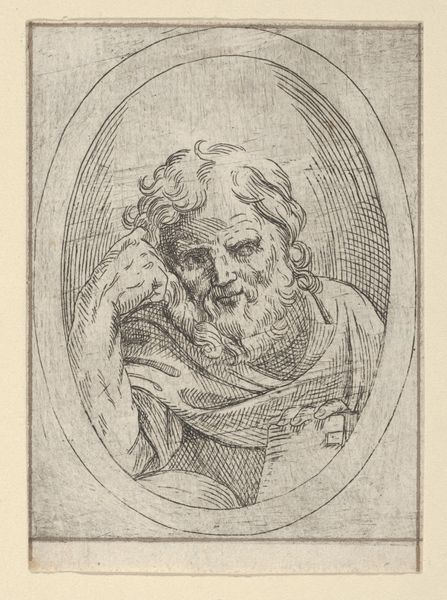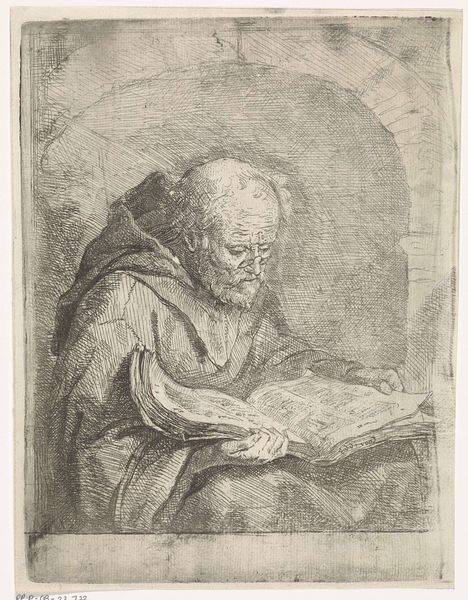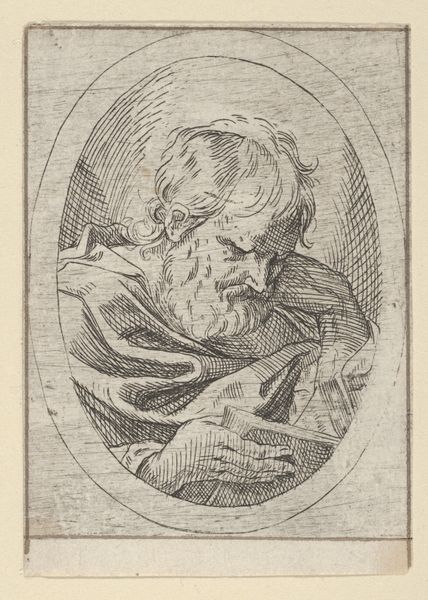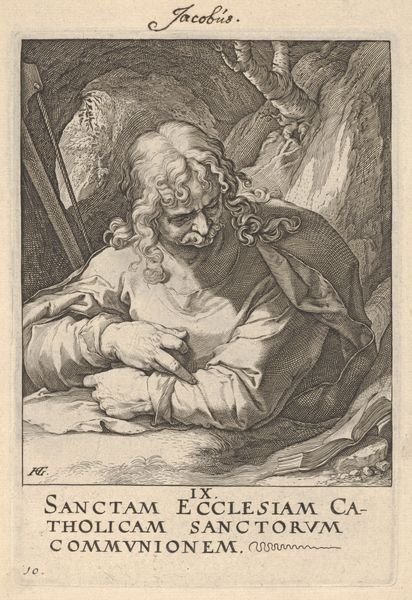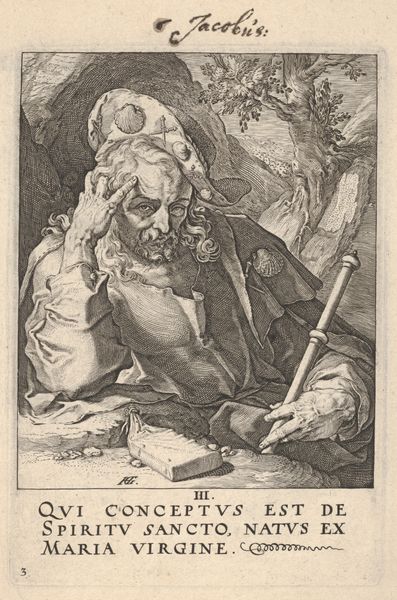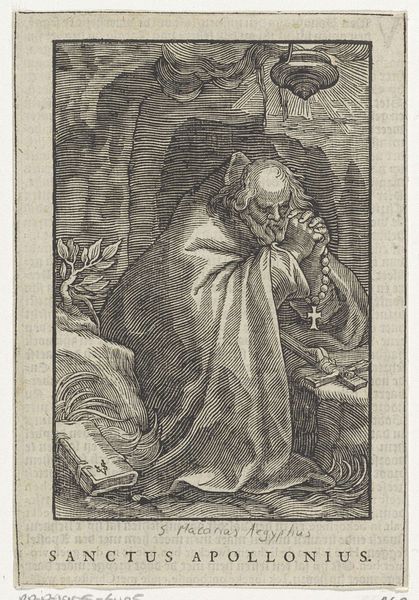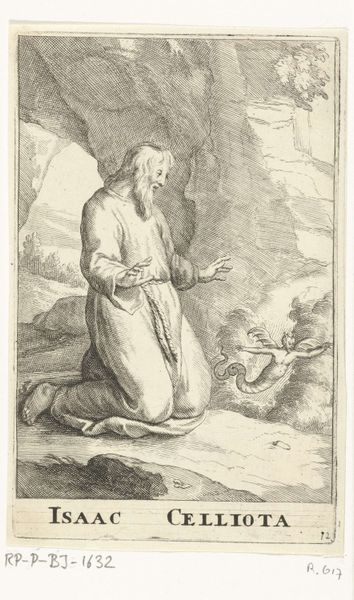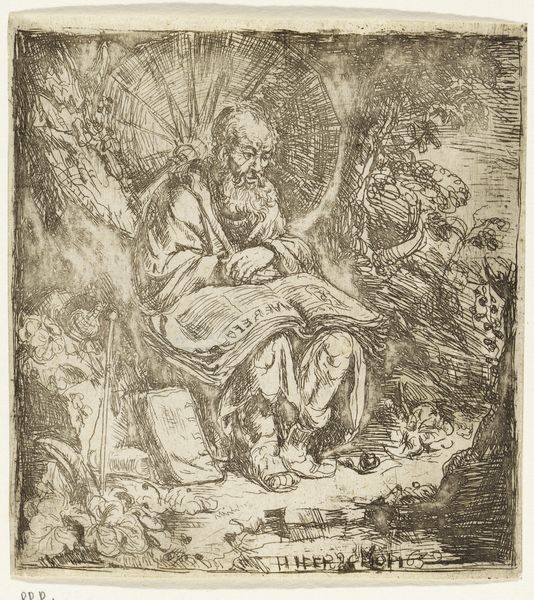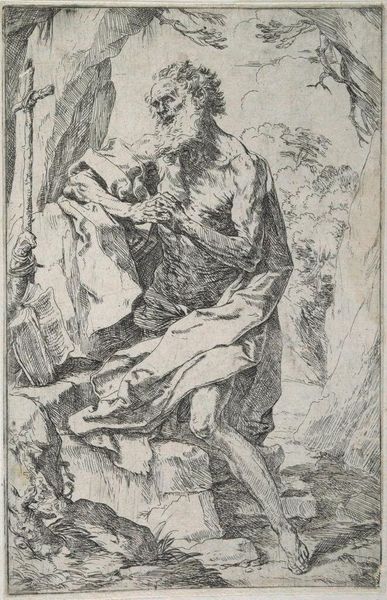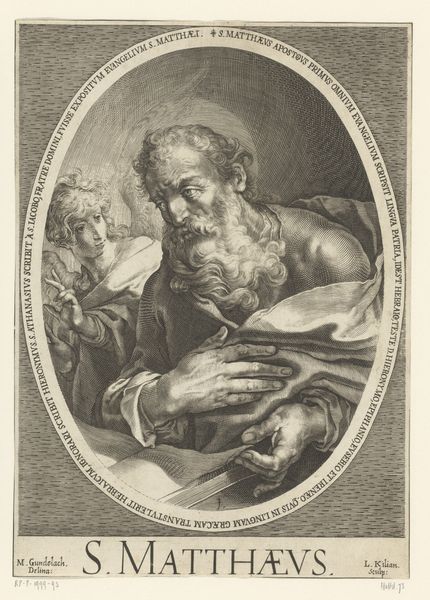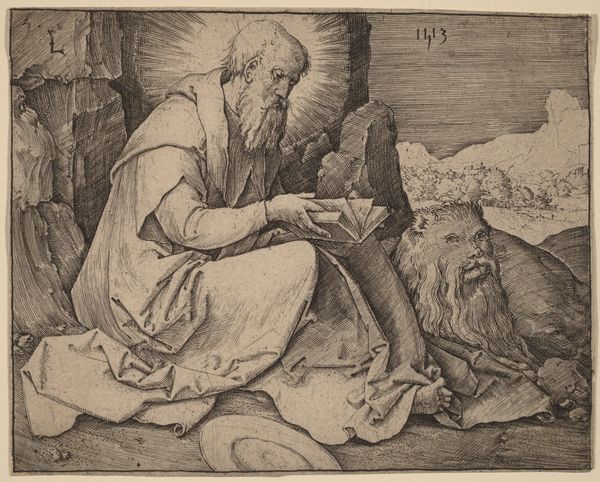
drawing, pencil
#
portrait
#
drawing
#
baroque
#
pencil drawing
#
pencil
#
genre-painting
#
history-painting
Dimensions: height 151 mm, width 117 mm
Copyright: Rijks Museum: Open Domain
Curator: Here we have “Petrus in gebed,” or "Peter in Prayer," a drawing that resides here at the Rijksmuseum, dating from sometime in the 18th century, created by an anonymous artist. Editor: My initial impression is the intensity of the emotion rendered through the seemingly simple medium of pencil. There's a palpable sense of humility and desperation in his posture. Curator: It’s fascinating how such strong emotion can be shown through the specific historical lens that is prayer. We see Peter, identified by the keys at his side. This references his role as the first Pope. But the prayer could speak to his role as a repentant apostle who denied Jesus. Editor: Precisely. And look at how the material choices and the artistic labor inform this. The seeming ease of pencil on paper belies the precision required to convey the texture of skin, the weight of the book and keys. This wasn’t some casual sketch; it’s a crafted object, produced through skilled and practiced labor. Curator: Right, and contextually, consider the production of images and their impact within society during this period. This depiction served perhaps to remind the contemporary audience the importance of the Catholic Church's teachings in a predominantly Protestant nation during the Baroque period. It uses the universally familiar visual vocabulary to reinforce established dogma. Editor: But even further than the intended purpose we see the work as a representation of value, that an anonymous laborer meticulously crafted these representations which at the end are themselves commodities for exchange on the art market. And look! Red chalk enhances Peter’s features; such subtle use to breathe life and humanity to his prayerful figure! Curator: Absolutely, and what makes it all the more compelling is how those materials combined, were not simply about artistic talent, but also religious and social purpose during the 18th century, that resonates profoundly even now. Editor: Agreed. Its ability to encapsulate raw vulnerability using only pencil, chalk, paper and human labor really leaves you contemplative about humanity’s inherent quest for both meaning and repentance.
Comments
No comments
Be the first to comment and join the conversation on the ultimate creative platform.
